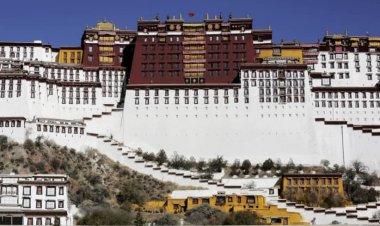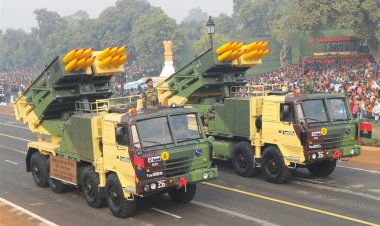Bhutan-China Border Issues: Unravelling Implications for India
This explainer discussed the Bhutan- China Border Issues and what are the Implications for India
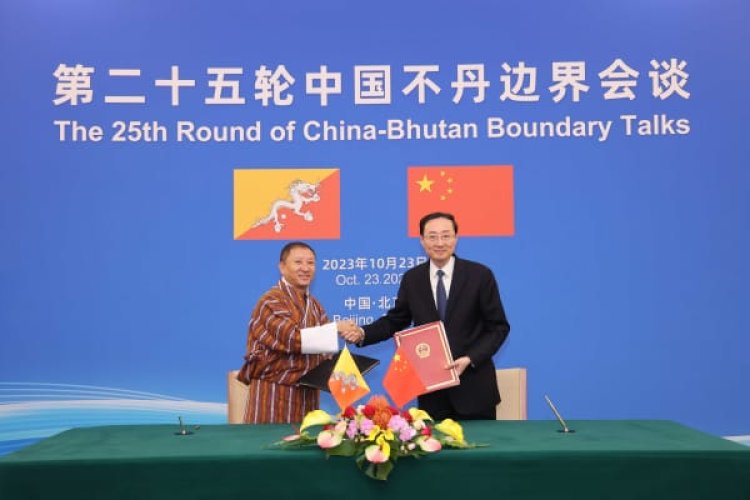
Explainer
By Satyansh Tomar
Bhutan, a small kingdom nation located between India and China, has maintained a positive relationship with India since its independence. The Treaty of Friendship, signed in 1949, established a foundation for the relationship and India has provided guidance on foreign policy matters until as recently as 2007. As part of the treaty, India is obligated to safeguard Bhutan's territory in the event of an external attack to ensure the preservation of its sovereignty.
On the other hand, diplomatic relations between Bhutan and China are nonexistent. However, the two countries have exchanged official envoys in an attempt to resolve shared disputes. There is speculation that Bhutan may establish diplomatic ties with the People's Republic of China once the disputed border matters are resolved.
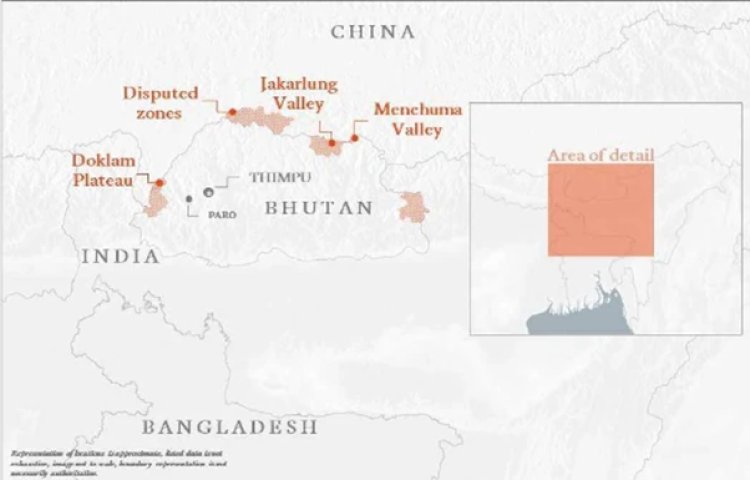
Bhutan's geographic location holds significant importance to both India and China, owing to its close proximity to the North Eastern states of India and the Siliguri Corridor, which links the Indian mainland to the North Eastern region of India. The presence of disputed regions such as the Doklam plateau, coupled with their proximity to Indian states, creates security concerns for the Indian strategic community. Recent satellite imagery reveals unauthorized construction of settlements along the contested border in Bhutan's northern Himalayan region. Chetham House report suggests that Bhutan might give up both Jakarlung and the neighbouring Menchuma valley to the Chinese. With Bhutan and its closeness with the Indian government, it should be expected that Bhutan will not go the route that has been taken by India’s other neighbours in the past, which is the Chinese route, creating a problem for the Indian community.
Background:
To provide a background of the situation, we must go back to the history of the disputes. The People’s Republic of China was established in October 1949, but it was not until two years later that they shared a boundary with Bhutan, which became possible after the invasion of Tibet by the PRC. This culminated in a series of border disputes with the Indians as well as the Bhutanese. The territorial claims of China and Bhutan are based on different historical and administrative factors. China's claims rely on historical documents that existed during the Qing Empire, which ended in 1912. The subsequent changes led to conflicts, as China sought to regain territories that were formerly under its control. Bhutan, on the other hand, bases its claims on the administration and control of the area throughout the century. After becoming a hereditary monarchy at around the same time as the fall of the Qing Empire, Bhutan established a stable system of governance, which eventually led to a more centralized government coinciding with India's independence. Bhutan chose to exist as a separate state, with India guiding its foreign policy and defense, resulting in friendly relations between the two countries. The end of British association with Bhutan culminated in a series of border issues with China.
In 1984, Bhutan and China decided to address these issues by having border talks and have since focused on mainly three disputed areas — Jakarlung and Pasamlung areas in north Bhutan, and the Doklam area in west Bhutan. The Chinese claims around 495 sq. km in Northern Bhutan and 269 sq. km in western Bhutan. Since 2020, it has claimed another 740 sq. km of territory in Sakteng Wildlife Sanctuary in Eastern Bhutan. The historical and geopolitical significance of the disputed regions is quite a lot, and it becomes a tough task to resolve these issues due to a lot of constraints. Bhutan and China held the 25th round of border talks in October 2023, with disputes still not getting resolved.
Current Status of Bhutan-China Relations:
Bhutan is one of the very few countries that has been isolated from international affairs for a very long time. Bhutan has not established diplomatic relations with the People’s Republic of China, and they still don’t have embassies in each other’s capitals. This could change with the culmination of the border talks between the two countries, which will ring warning bells for India. This is still far from happening though, with the Chinese entering and making several illegal settlements inside the Bhutanese territory. The Asian giant has built outposts in Bhutan’s remote Jakarlung Valley, a part of the Beyul Khenpajong region. At least 129 buildings, presumably residential quarters in one settlement, and more than 60 buildings in a second enclave nearby are being built by China in the valley, reported NDTV. Another settlement has been built in the Menchuma Valley, a settlement even higher than Beyul, which never had roads or settlements. This points out the fact that China doesn’t believe in the treaties that have been signed over time and is ready to even violate a country's borders. China is hell-bent on testing Bhutan’s red lines and wants to see how long until they react to such a major issue. Bhutan being a small country, won’t be able to retaliate as they don’t have either the resources or the backing at the international level. India is responsible for any kind of threat that Bhutan faces and will have to defend Bhutanese sovereignty. This complicates the situation further with regional implications for the whole of South Asia.
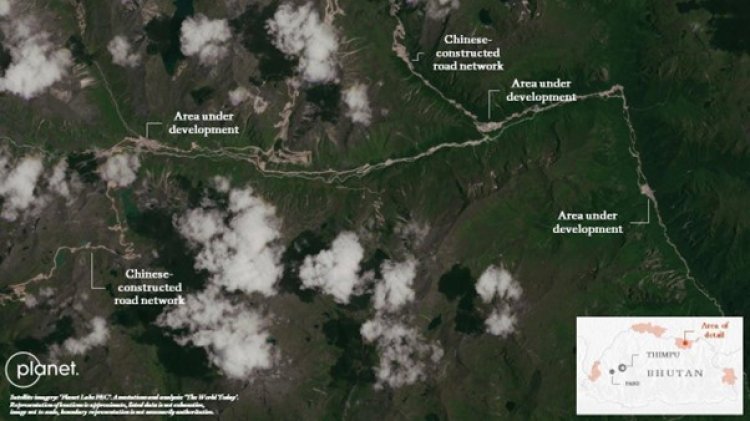
Figure 1- 2 July, 2022- Jakarlung
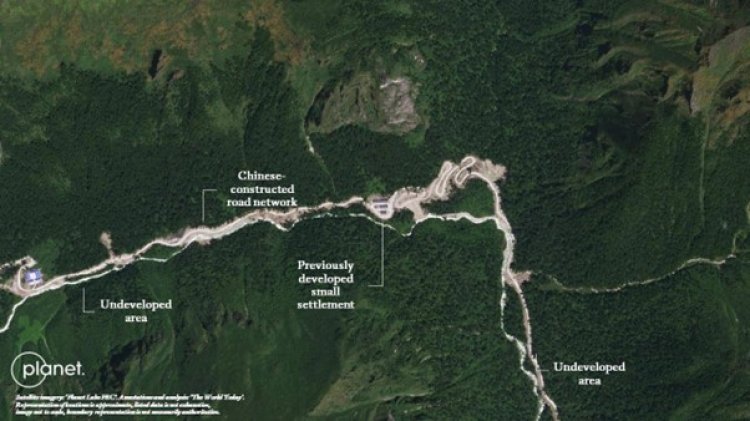
Figure 2- 2 September, 2023- Jakarlung
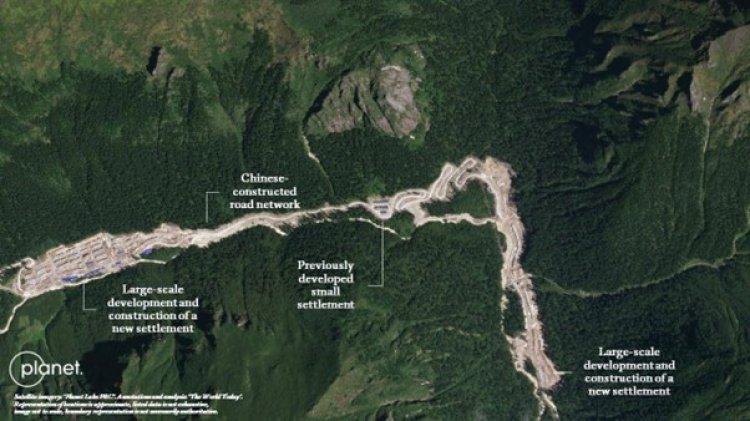
Figure 3- 11 August, 2022- zoomed version

Figure 4- 13 september, 2023- zoomed version
Geopolitical Implications:
This unsanctioned and illegal settlement construction along the Bhutanese border can have huge regional implications. The Doklam Plateau, a tri-junction of India, Bhutan, and China, has been a point of contestation. Beijing considers this as an extension of the Chumbi Valley, which is wedged between the Indian state of Sikkim and Bhutan’s Western frontier. Doklam came to the news in 2017 due to the standoff between the Indian and Chinese forces, as China was building roads and constructing structures in the disputed region. India considers Doklam as Bhutanese undisputed territory. Doklam is strategically quite important to India due to its proximity to the Siliguri corridor, which connects mainland India with the North Eastern States of India. Siliguri Corridor is a narrow strip of land that has an area of 89 sq. km with its width being less than 10 km. Choking this gateway to Northeast India can be a game changer in a larger conflict between India and China as it can give the People’s Liberation Army (PLA) forces an advantage over the Indian forces. India's emergence as a major superpower leads to a power balance in Asia. China’s strategic goal is to bring back the golden days of its previous prospering empires, where they were the hegemon of the world.
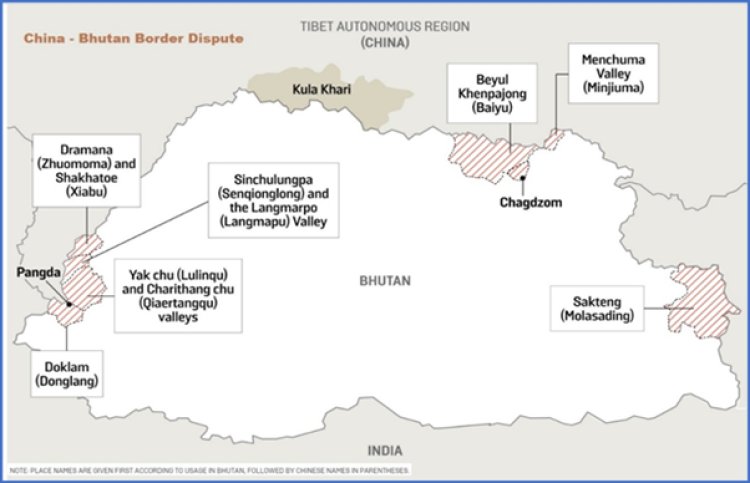
Earlier this year, Bhutanese Prime Minister Lotay Tshering in an interview with a Belgian daily reportedly said, "Doklam is a junction point between India, China, and Bhutan. It is not up to Bhutan alone to solve the problem". In his interview with The Hindu, Tshering had not rejected the possibility of a land swap between Bhutan and China as part of the border deal. This could complicate the matters for Indian strategic community in case Bhutan decides to swap the Doklam Plateau while retaining Menchuma Valley and Beyul Khenpajong due to their significance in the Bhutanese culture. The royal family traces its ancestral heritage to the mountainous region, yet the government has been powerless to stop Chinese settlement there.
Conclusion:
It remains to be seen whether the border issue will be resolved or not, but it certainly creates a huge strategic problem for India. A small nation like Bhutan can only withstand pressure from a giant like China for a certain amount of time until it starts to feel the heat. With China already moving into the Bhutanese territory, it’s a race against time where they’ve to decide whether to stand by their old friend or to strike a deal with China, whose main implications could include risking a large conflict in the region. The strategic importance of the Siliguri Corridor is quite high and can compel India to take certain measures to ensure its national security. Ensuring peace has been quite tough in the recent past, and two nuclear giants going head to head is the last thing this world would wish for. Certain Confidence Building Measures (CBMs) should be taken in the region to ensure long-lasting peace.
Disclaimer: This paper is the author's individual scholastic contribution and does not necessarily reflect the organization's viewpoint.




